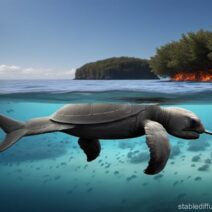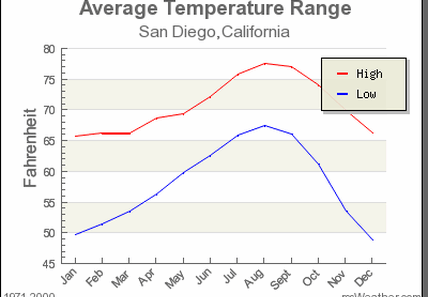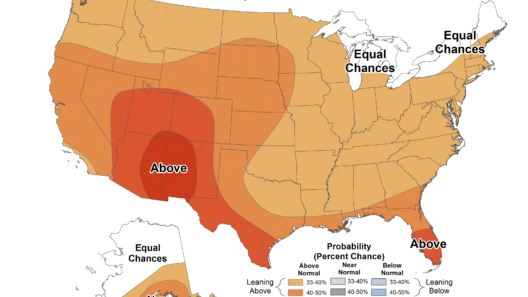Southern California, a region celebrated for its balmy climate and stunning coastal vistas, embodies the enchanting juxtaposition of desert landscapes and the vast Pacific Ocean. The unique interplay of ecosystems in this area captivates not only the imagination of residents and visitors but also serves as a vital case study for understanding broader environmental implications related to climate change, urbanization, and biodiversity.
At first glance, the allure of Southern California might be attributed to its inviting beaches, swaying palms, and vibrant urban life. Yet, beneath the sun-soaked facade lies an intricate tapestry woven from desert ecosystems and marine biodiversity. The striking contrast between the arid desert regions—like the Mojave and Sonoran deserts—and the temperate coastal zones creates a unique environment that fosters both rich biodiversity and meaningful ecological relationships.
The fascination with Southern California’s climate often hinges on this unique dichotomy. It is not merely a place of juxtaposition but a microcosm reflecting the climatic challenges faced globally. The distinct desert landscapes contribute to the allure, yet they reveal deeper, underlying issues such as water scarcity, habitat degradation, and the effects of climate change.
Southern California’s climate is largely classified as Mediterranean, but it is important to delineate its characteristics that contribute to the region’s desert-like tendencies. The prevailing climate is marked by hot, dry summers and mild, wetter winters. This unique climate is further influenced by the rain shadow effect, created by the imposing Sierra Nevada mountains that block moisture-laden winds from reaching the interior valleys.
This setting has created a landscape of aridity that supports a plethora of desert flora and fauna, some of which are endemic to the region. Iconic species such as the creosote bush, Joshua tree, and the agile and resilient desert tortoise demonstrate incredible adaptations to survive in such a harsh environment. These ecosystems provide essential services, including carbon sequestration and habitat for various wildlife, further highlighting their importance amidst the encroaching threat of climate change.
The interplay between desert and marine ecosystems raises questions about resilience and sustainability. Coastal areas in Southern California face myriad threats, including rising sea levels, coastal erosion, and increased temperatures. The ocean, while temperate, is not immune to the repercussions of human activity. Overfishing, pollution, and habitat destruction have exacerbated the challenges faced by marine life.
Yet, there is a peculiar fascination with the coast. People flock to the beaches with dreams of relaxation, recreation, and connection to nature. This attraction to the shoreline often overshadows the stark realities of climate change that paradoxically afflict both coastal and desert regions. The stark beauty of desert landscapes draws many to explore and appreciate the parched corners of Southern California, yet the underlying fragility of these environments bears consideration.
An understanding of Southern California’s climate must account for its cultural significance as well. The aesthetics of desert landscapes, with their golden hues and expansive vistas, foster a sense of tranquility and inspiration. The psychological appeal of such environments perpetuates a sense of escapism, challenging the notion that human beings should seek harmony with nature rather than viewing it solely as a resource to exploit.
Moreover, Southern California’s allure impacts urban development. Cities sprawling along the coastline must navigate the delicate balance between expansion and ecological integrity. Urbanization often encroaches on vital habitats, exacerbating fragmentation and threatening species already vulnerable to climate change. Sustainable urban planning practices are paramount in mitigating these effects while allowing continued interaction with the stunning landscapes inherent to the region.
Community engagement is another indispensable factor in addressing these climatic challenges. Local initiatives aimed at promoting sustainability, conservation efforts, and educational outreach can effectively enhance public awareness regarding the interconnectedness of desert and marine ecosystems. Embracing a sense of stewardship within local communities becomes crucial in fostering a strong commitment to preserving the natural heritage of Southern California.
Climate change remains an undeniable reality impacting the region. As temperatures rise and precipitation patterns shift, resilience strategies are necessary to safeguard both desert ecosystems and coastal communities. Adaptation measures, such as restoring native vegetation, improving water use efficiency, and enhancing coastal infrastructure, can help mitigate some of the dire consequences anticipated in impending decades.
Additionally, addressing the socio-economic disparities within Southern California is vital. Vulnerable populations, often residing in coastal regions, face heightened exposure to climate-related hazards. Social equity must converge with ecological endeavors if the aim is to create resilient systems capable of withstanding future challenges.
In conclusion, Southern California’s climate embodies a captivating duality—the allure of a desert dream set against the serene backdrop of the sea. Yet, this fascination must be tempered with an acute awareness of the pressing environmental issues that accompany such beauty. Understanding the delicate balance between these two ecosystems is paramount, as is fostering public engagement and equitable solutions. Only through a concerted effort can Southern California navigate the precarious interplay of climate change, urban development, and conservation, ensuring that the desert dream by the sea remains a sustainable reality for generations to come.






